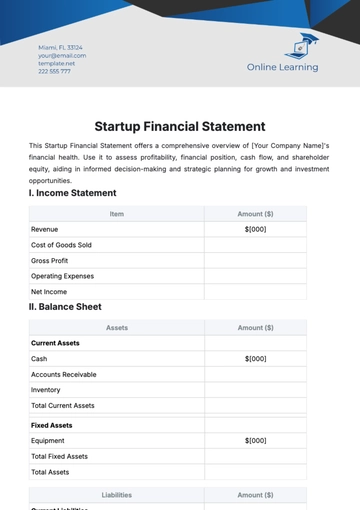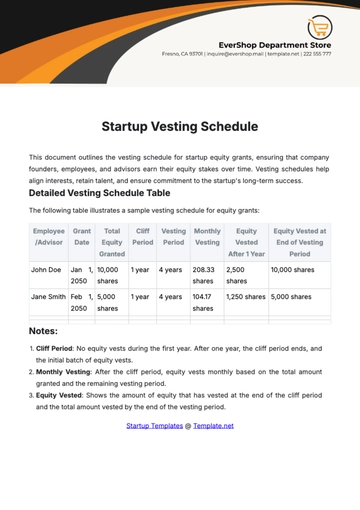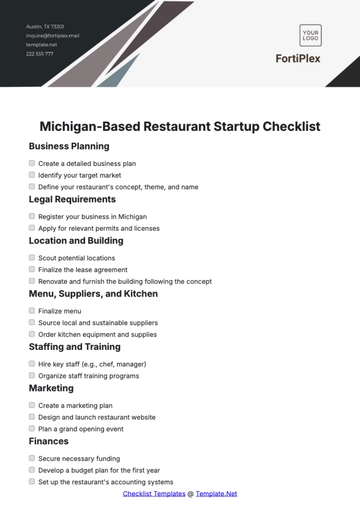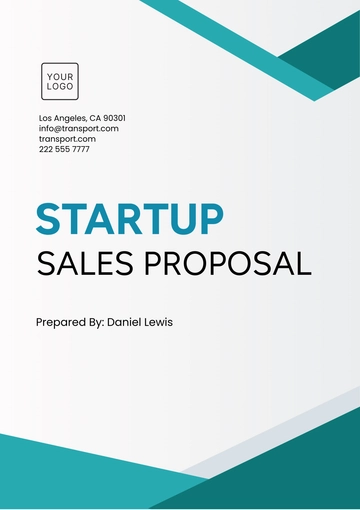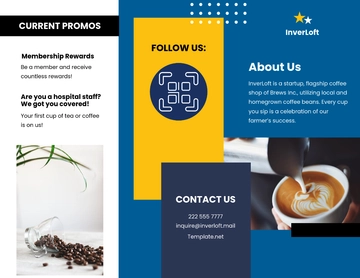Free Startup Marketing Brief

Prepared by: [YOUR NAME]
Executive Summary:
[Your Company Name] marketing strategy focuses on leveraging various channels to maximize growth potential and market penetration.
CORE OBJECTIVES:
This table provides a clear and concise overview of the core objectives.
Core Objectives | Description |
|---|---|
Increase brand awareness and recognition | Implement strategies to make [Your Company Name] known and recognizable within the target audience and industry. |
Drive customer acquisition and retention | Focus on acquiring new customers while ensuring existing customers remain satisfied and loyal to the brand. |
Enhance online presence and engagement | Utilize digital platforms effectively to increase [Your Company Name] visibility and engagement with the audience. |
Boost sales and revenue generation | Develop tactics to increase sales and revenue through targeted marketing efforts and product promotion. |
Create strong and positive brand attachment | Establish a favorable perception of [Your Company Name] by delivering exceptional value and fostering brand loyalty. |
Target Audience:
This table neatly organizes the demographic details, interests, and preferred channels for reaching each segment of the target audience.
Target Audience | Demographic | Interests | Preferred Channels |
|---|---|---|---|
Young Professionals | Ages 25-35 | Tech, Entrepreneurship, Personal Development | LinkedIn, Twitter, Blogs, Podcasts |
College Students | Ages 18-24 | Education, Social Causes, Lifestyle Trends | Facebook, Instagram, YouTube, Snapchat |
Key Messages:
This table succinctly outlines the key messages that [Your Company Name] wants to convey to its target audience, making it easy to reference and understand within the marketing strategy document.
Key Messages |
|---|
Our solution is designed to make your life easier and more efficient. |
We are a trusted partner for your growth journey. |
Our offerings are innovative, reliable, and superior in quality. |
We are committed to delivering excellent customer experience. |
Connect with us to stay ahead in the fast-paced tech landscape. |
Marketing Channels:
This table provides a clear breakdown of the various marketing channels [Your Company Name] will utilize to reach its target audience, making it easy to understand and reference within the marketing strategy document.
Marketing Channels | Description |
|---|---|
Website and SEO | Optimize [Your Company Name] website for search engine and user experience. |
Social Media Platforms | Engage with the audience through LinkedIn, Twitter, YouTube, and Instagram. |
Email Marketing | Send targeted emails to prospects and customers with relevant content and offers. |
Content Marketing | Publish informative blog posts, articles and whitepapers on tech-related topics. |
Events and Webinars | Host online events and webinars to showcase products and share industry insights. |
Success Metrics:
Increase in website traffic and user engagement.
Growth in social media followers and engagement metrics.
Rise in email open and click-through rates.
New customer acquisition and existing customer retention rates.
Increase in sales revenue and customer lifetime value.
Budget Estimate:
This table provides a breakdown of the estimated budget allocation for each marketing channel, along with the total budget for [Your Company Name] marketing efforts.
Marketing Channel | Estimated Budget Allocation ($) |
|---|---|
Website and SEO | $5,000 |
Social Media Platforms | $7,000 |
Email Marketing | $3,000 |
Content Marketing | $4,000 |
Events and Webinars | $6,000 |
Total | $25,000 |
Timeline:
This table provides a quarterly breakdown of the activities planned for [Your Company Name] marketing strategy, making it easy to track progress and ensure the timely execution of tasks.
Quarter | Activities |
|---|---|
Q1 | - Launch the website and initiate SEO optimization. |
- Establish social media profiles and start posting. | |
- Implement initial email marketing campaigns. | |
- Begin content creation and publishing schedule. | |
- Plan and schedule the first webinar event. | |
Q2 | - Continue SEO optimization and monitor website traffic. |
- Increase social media engagement and followers. | |
- Refine email marketing strategy based on analytics. | |
- Expand content marketing efforts with guest posts. | |
- Host the first webinar and gather feedback. | |
Q3 | - Analyze SEO performance and make necessary adjustments. |
- Launch targeted ad campaigns on social media platforms. | |
- Implement segmentation and personalization in email marketing. | |
- Focus on producing high-quality content and whitepapers. | |
- Plan and promote a larger-scale webinar event. | |
Q4 | - Evaluate overall marketing performance for the year. |
- Optimize website and social media based on analytics. | |
- Execute end-of-year promotional campaigns. | |
- Publish a year-end roundup and future outlook blog post. | |
- Host a special year-end webinar for customers. |
Conclusion:
This integrated marketing strategy positions [Your Company Name] for success by increasing visibility, engagement, and revenue. It's designed to adapt to changing market dynamics and audience preferences, ensuring long-term growth and sustainability.
- 100% Customizable, free editor
- Access 1 Million+ Templates, photo’s & graphics
- Download or share as a template
- Click and replace photos, graphics, text, backgrounds
- Resize, crop, AI write & more
- Access advanced editor
Introducing the Startup Marketing Brief Template from Template.net. Crafted for entrepreneurs seeking clarity in marketing strategies. This editable and customizable tool streamlines your planning process, ensuring precision in every detail. Compatible with our AI Editor, it enables seamless modifications for a tailored approach. Elevate your marketing game effortlessly with this essential template.
You may also like
- Startup Agreement
- Non Profit
- Transport and Logistics
- Education
- IT Services and Consulting
- Startup Presentation
- Startup Business Plan
- Startup Proposal
- Startup Plan
- Startup Brochure
- Startup Form
- Startup Flyer
- Startup Checklist
- Startup Budget
- Startup Poster
- Startup Contract
- Startup Invoice
- Startup Letterhead
- Startup Quotes

